Abstract
OBJECTIVE: To describe the development and implementation of a multifaceted program in an inner-city healthcare center designed to improve access to care and empower patients to take a more active role in managing diabetes. PROCEDURES: AHC is one of 30 outpatient health centers in the Ambulatory and Community Health Network of the Cook County Bureau of Health Services. AHC serves a predominantly African-American population with four full-time-equivalent primary care providers treating approximately 700 diabetes patients with >450 waitlisted patients, many with diabetes. Budget constraints limit capacity to add providers. In January 2005, open-access, multi-station group visits were implemented to improve access to care and empower patients to take a more active role in managing diabetes. The program is called Diabetic Rewards Issued Via Everyone (DRIVE) Day. Elements include: 1. group visits held monthly; 2. patient-selected activities, including diabetes education, nutrition, exercise, group discussions and Q&A sessions; 3. provider support, including implementation of evidence-based guidelines for glycemic, lipid and hypertension management, retinal screening, foot exams and medication adjustment; and 4. web-based patient registry FINDINGS: Of the clinic's 737 diabetes patients, 294 (40%) have attended > or =1 DRIVE Days, for a total of 775 patient encounters between January 2005 and October 2006. CONCLUSIONS: In an environment with limited resources, DRIVE Day has improved access to care, provided an opportunity for diabetes patients to take a more active role in their care and enabled providers to see a higher volume of patients and offer efficient, comprehensive care.
Full text
PDF
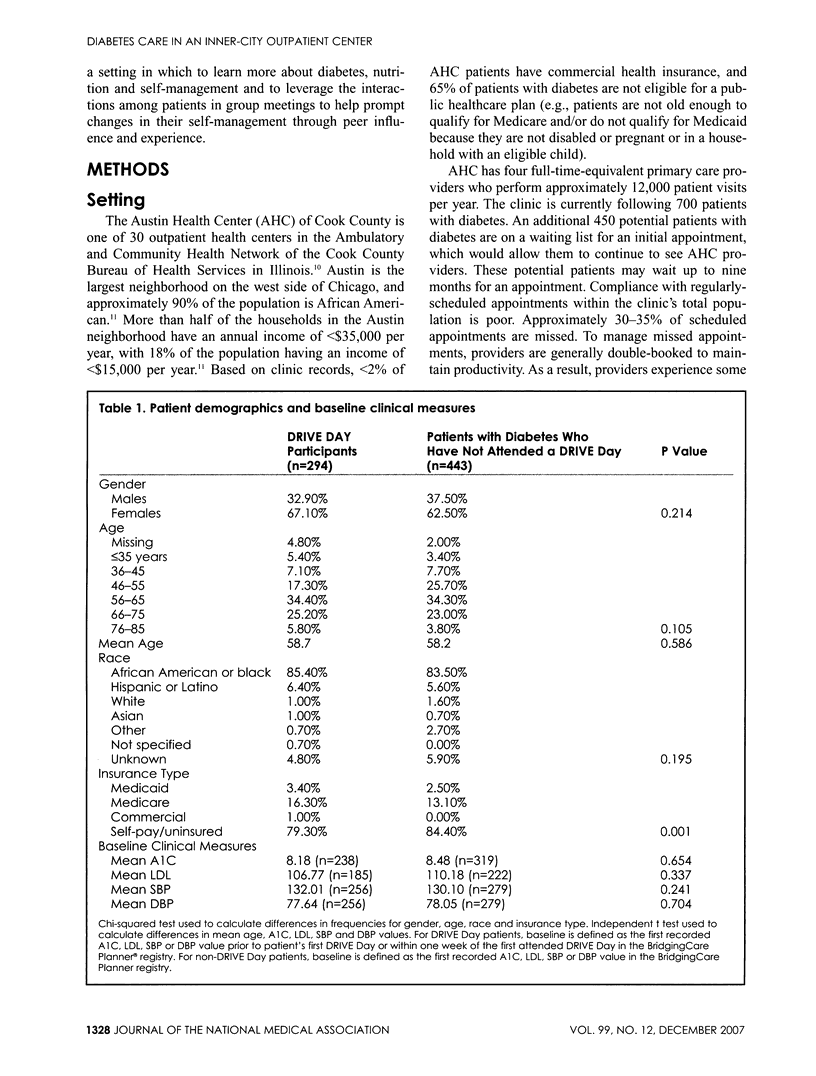

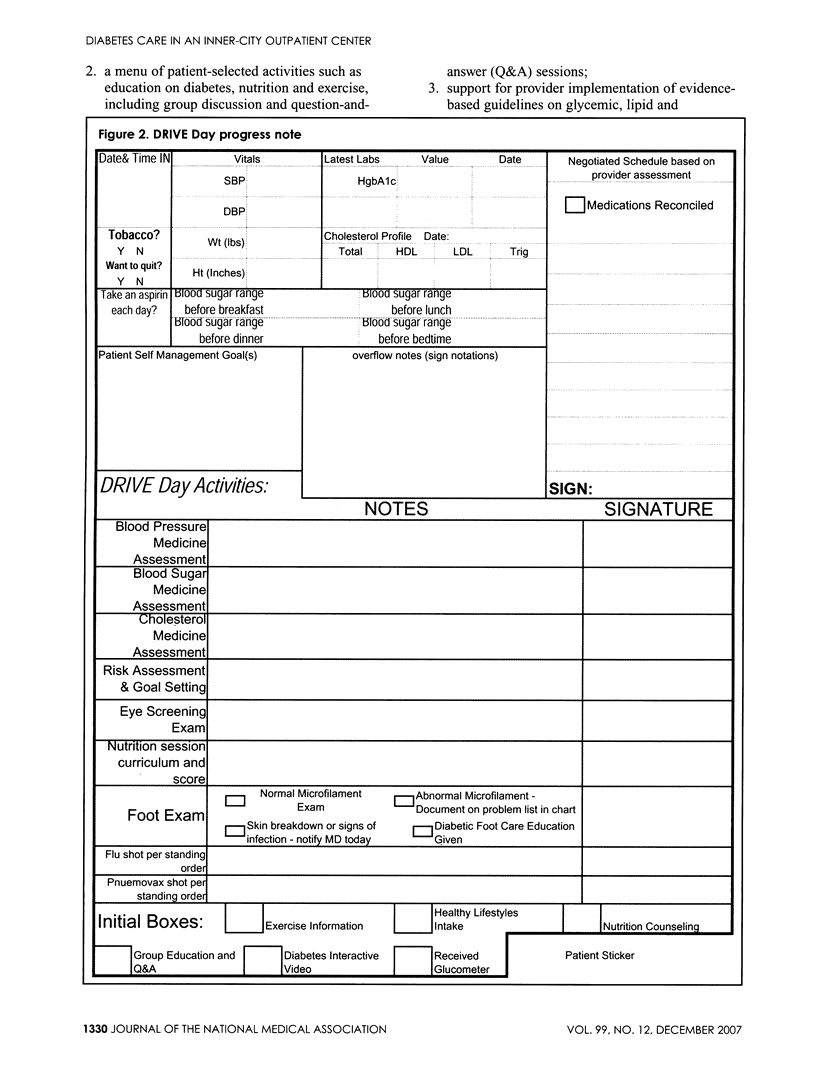
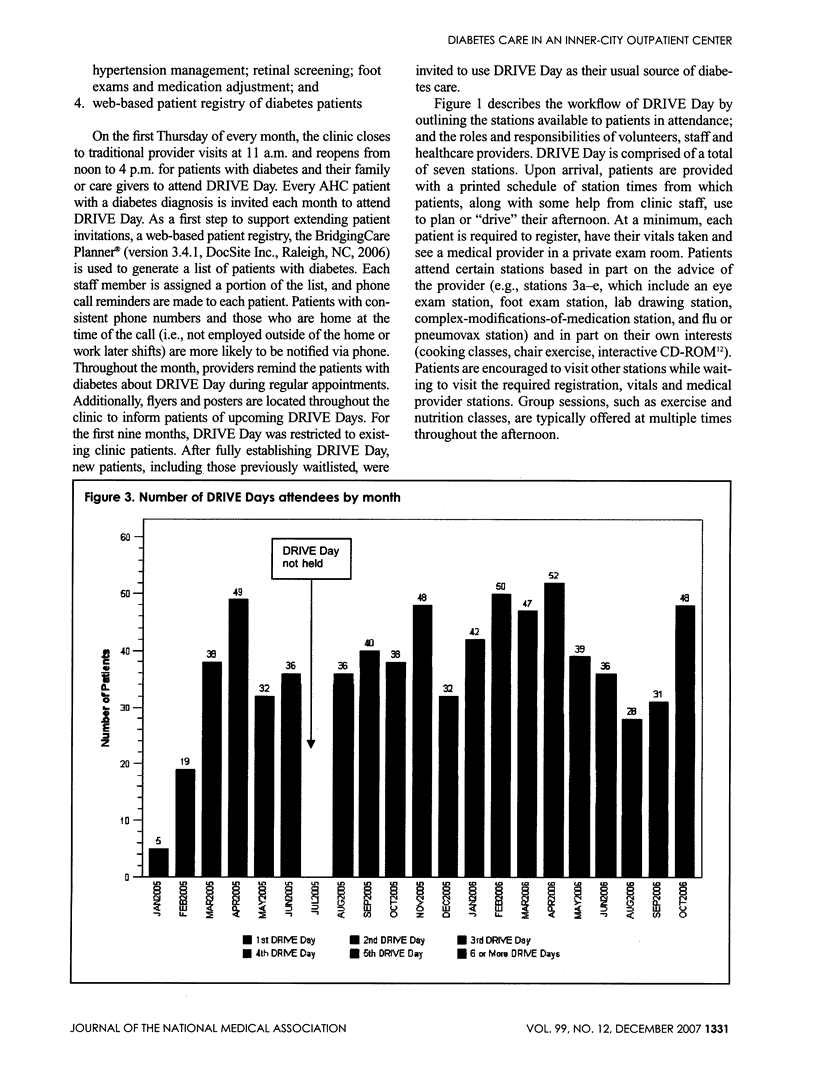
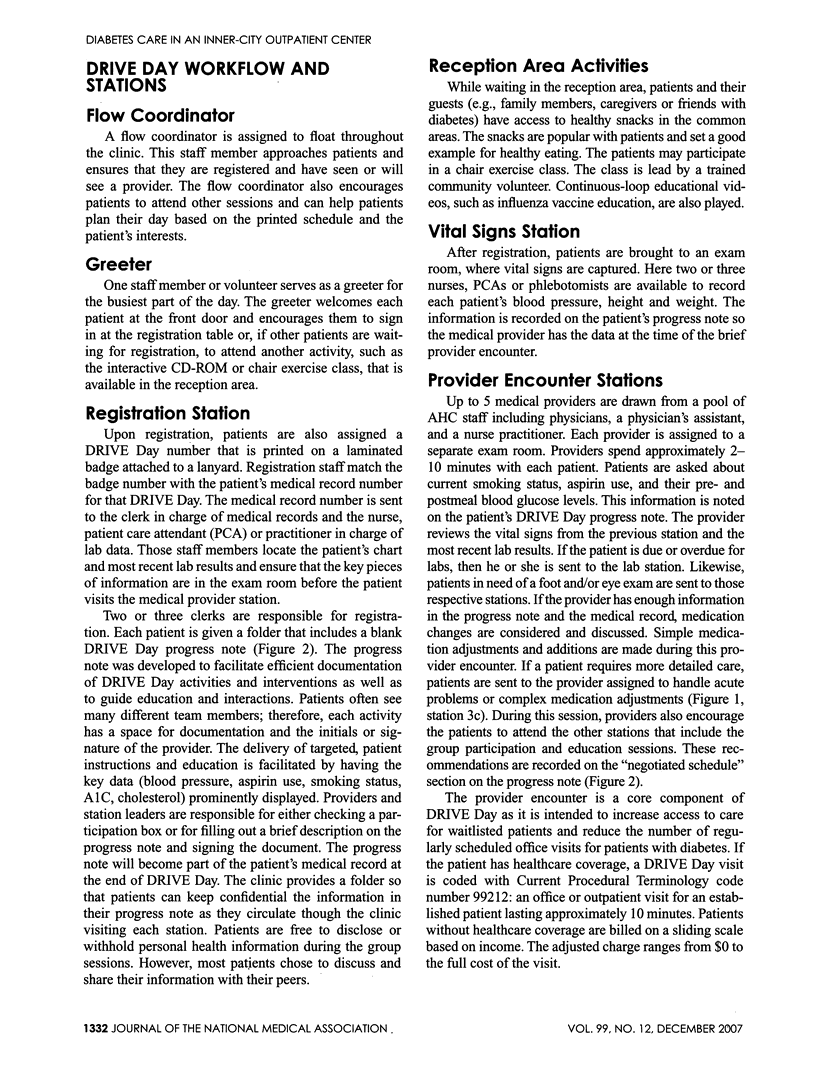
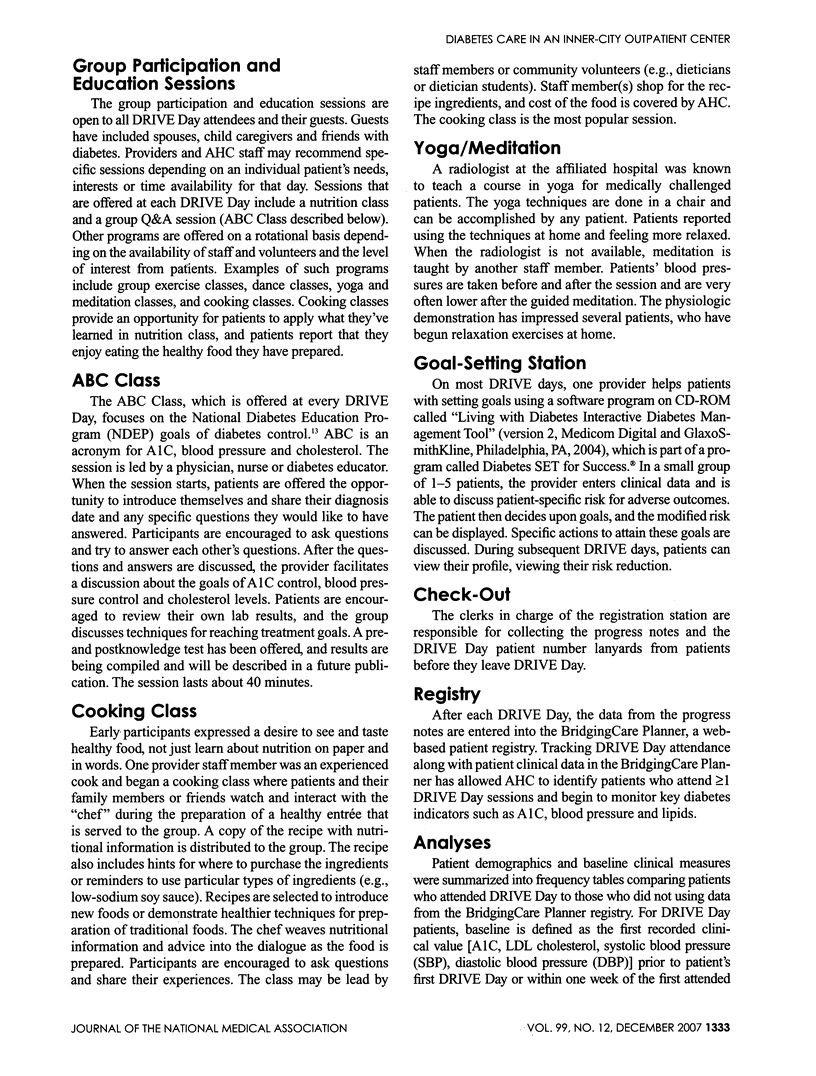
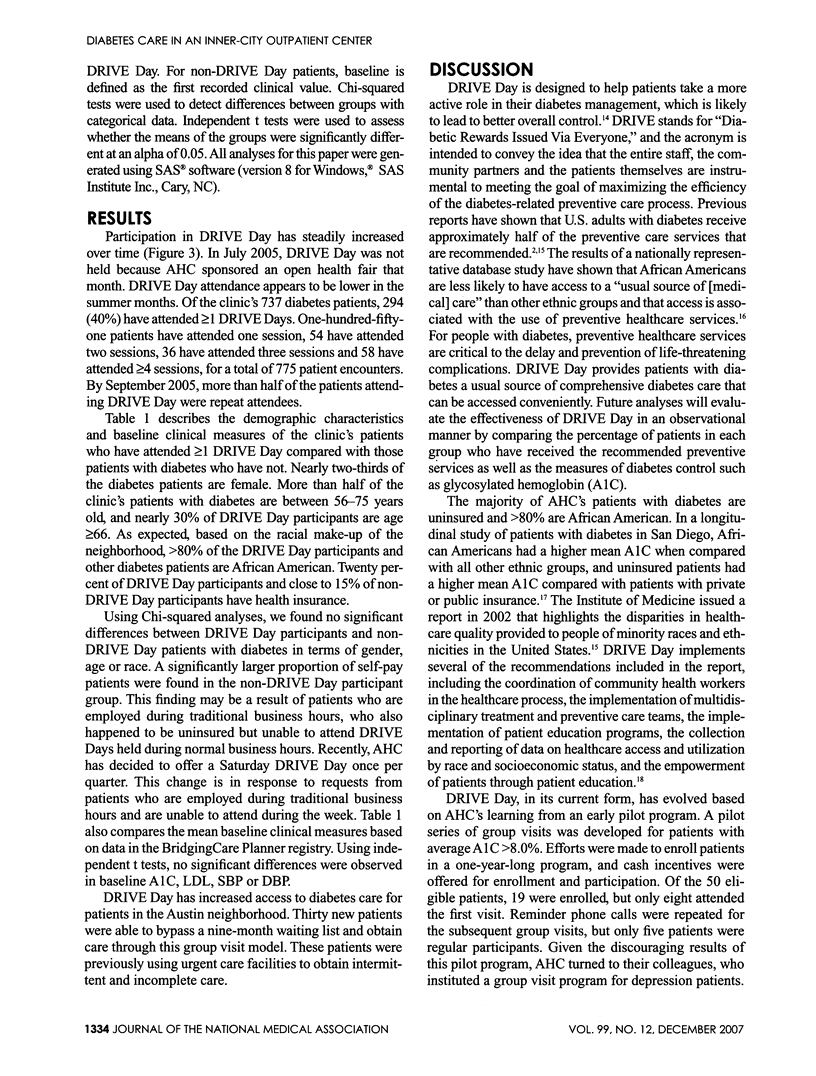

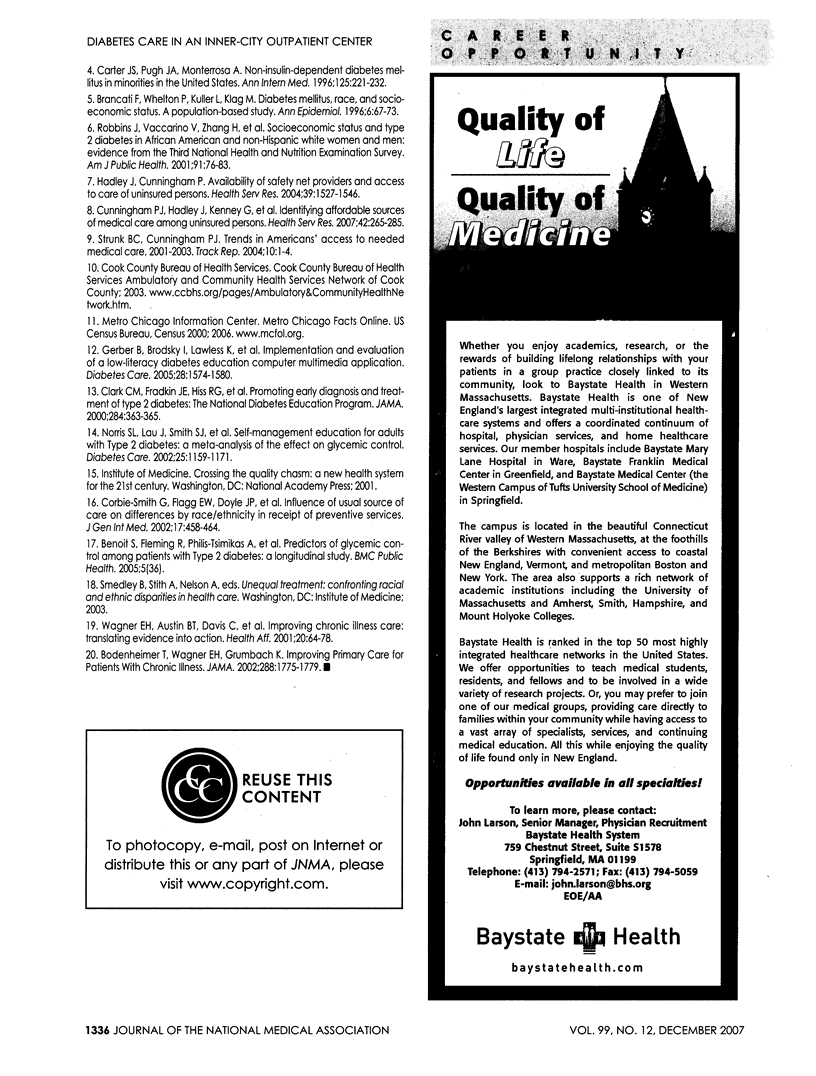
Selected References
These references are in PubMed. This may not be the complete list of references from this article.
- Bodenheimer Thomas, Wagner Edward H., Grumbach Kevin. Improving primary care for patients with chronic illness. JAMA. 2002 Oct 9;288(14):1775–1779. doi: 10.1001/jama.288.14.1775. [DOI] [PubMed] [Google Scholar]
- Brancati F. L., Whelton P. K., Kuller L. H., Klag M. J. Diabetes mellitus, race, and socioeconomic status. A population-based study. Ann Epidemiol. 1996 Jan;6(1):67–73. doi: 10.1016/1047-2797(95)00095-x. [DOI] [PubMed] [Google Scholar]
- Carter J. S., Pugh J. A., Monterrosa A. Non-insulin-dependent diabetes mellitus in minorities in the United States. Ann Intern Med. 1996 Aug 1;125(3):221–232. doi: 10.7326/0003-4819-125-3-199608010-00011. [DOI] [PubMed] [Google Scholar]
- Clark C. M., Fradkin J. E., Hiss R. G., Lorenz R. A., Vinicor F., Warren-Boulton E. Promoting early diagnosis and treatment of type 2 diabetes: the National Diabetes Education Program. JAMA. 2000 Jul 19;284(3):363–365. doi: 10.1001/jama.284.3.363. [DOI] [PubMed] [Google Scholar]
- Corbie-Smith Giselle, Flagg Elaine W., Doyle Joyce P., O'Brien Megan A. Influence of usual source of care on differences by race/ethnicity in receipt of preventive services. J Gen Intern Med. 2002 Jun;17(6):458–464. doi: 10.1046/j.1525-1497.2002.10733.x. [DOI] [PMC free article] [PubMed] [Google Scholar]
- Cunningham Peter J., Hadley Jack, Kenney Genevieve, Davidoff Amy J. Identifying affordable sources of medical care among uninsured persons. Health Serv Res. 2007 Feb;42(1 Pt 1):265–285. doi: 10.1111/j.1475-6773.2006.00603.x. [DOI] [PMC free article] [PubMed] [Google Scholar]
- Davidson Mayer B. Staying the course--with a few adjustments. Diabetes Care. 2002 Jan;25(1):1–1. doi: 10.2337/diacare.25.1.1. [DOI] [PubMed] [Google Scholar]
- Gerber Ben S., Brodsky Irwin G., Lawless Kimberly A., Smolin Louanne I., Arozullah Ahsan M., Smith Everett V., Berbaum Michael L., Heckerling Paul S., Eiser Arnold R. Implementation and evaluation of a low-literacy diabetes education computer multimedia application. Diabetes Care. 2005 Jul;28(7):1574–1580. doi: 10.2337/diacare.28.7.1574. [DOI] [PubMed] [Google Scholar]
- Hadley Jack, Cunningham Peter. Availability of safety net providers and access to care of uninsured persons. Health Serv Res. 2004 Oct;39(5):1527–1546. doi: 10.1111/j.1475-6773.2004.00302.x. [DOI] [PMC free article] [PubMed] [Google Scholar]
- Harris M. I. Epidemiological correlates of NIDDM in Hispanics, whites, and blacks in the U.S. population. Diabetes Care. 1991 Jul;14(7):639–648. doi: 10.2337/diacare.14.7.639. [DOI] [PubMed] [Google Scholar]
- McGlynn Elizabeth A., Asch Steven M., Adams John, Keesey Joan, Hicks Jennifer, DeCristofaro Alison, Kerr Eve A. The quality of health care delivered to adults in the United States. N Engl J Med. 2003 Jun 26;348(26):2635–2645. doi: 10.1056/NEJMsa022615. [DOI] [PubMed] [Google Scholar]
- Robbins J. M., Vaccarino V., Zhang H., Kasl S. V. Socioeconomic status and type 2 diabetes in African American and non-Hispanic white women and men: evidence from the Third National Health and Nutrition Examination Survey. Am J Public Health. 2001 Jan;91(1):76–83. doi: 10.2105/ajph.91.1.76. [DOI] [PMC free article] [PubMed] [Google Scholar]
- Strunk Bradley C., Cunningham Peter J. Trends in Americans' access to needed medical care, 2001-2003. Track Rep. 2004 Aug;(10):1–4. [PubMed] [Google Scholar]
- Wagner E. H., Austin B. T., Davis C., Hindmarsh M., Schaefer J., Bonomi A. Improving chronic illness care: translating evidence into action. Health Aff (Millwood) 2001 Nov-Dec;20(6):64–78. doi: 10.1377/hlthaff.20.6.64. [DOI] [PubMed] [Google Scholar]


